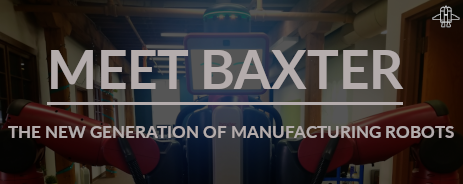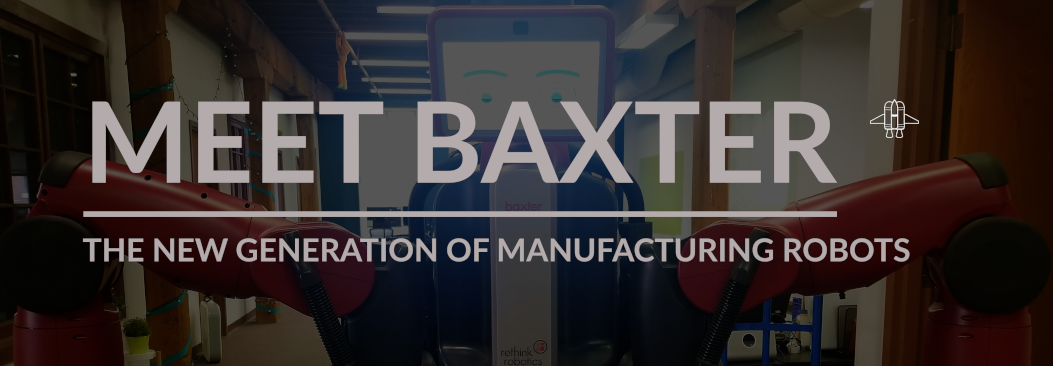
Robots, Cobots, and ERP Integration…In Other Words, Meet Baxter!
The digital transformation is taking the world by storm. No industry has remained unaffected, and some have already changed drastically. Even our own daily lives have moved so fully into the digital world that the concept of a human-technology convergence is no longer just a hypothesis.
Welcome to the Fourth Industrial Revolution, or Industry 4.0.
In this new era, more than ever before, we find ourselves “connected” — connected to each other, connected to objects that surround us, connected to objects that we can’t even see. With the help of the Internet of Things (IoT), we can communicate in entirely new ways.
The third industrial revolution came with an “e”, but the fourth revolution brought “smart:” Smartphones, smart cities, smart industries, and — smart manufacturing.
Though still in early stages, smart manufacturing is rapidly moving into the mainstream. As companies continue to carefully adopt smart technologies, the terms “IoT” and “robotics” have become part of the industry’s everyday jargon. Analysts suggest that tomorrow’s leading companies will be the ones that can most effectively adopt IoT solutions. The good news is that existing industry technologies stand ready to integrate with the next generation of smart manufacturing systems.
The third revolution brought us task automation; the fourth revolution brought us networks of intelligent and autonomous systems. These systems consist of ERPs integrated with IoT and robotic technologies allowing for smooth and coordinated data flow between software and machines. Thus, traditional robots are being replaced by “Cobots” (Collaborative Robots), which are capable of working alongside humans in cage-free environments.
Meet your first Cobot: Baxter, a humanoid robot capable of sensing, feeling, and performing simple and repetitive tasks.
Baxter is a Cobot that was first introduced by a startup called Rethink Robotics in 2012. Just like other Cobots, Baxter was designed to safely operate alongside humans. The robot’s head and arms are strategically covered with cameras and sensors capable of “feeling and seeing” its surroundings. In case of potential collision, Baxter would simply stop its operation and wait for instructions, which is a significant improvement over the previous generation of manufacturing robots.
Baxter also has the ability to identify failed operations and act accordingly. If, for example, it loses one of the tools needed for the task completion, it will stop. This is another significant improvement, as earlier generations of robots will continue their operation as if nothing happened, requiring human intervention. This can be both costly and dangerous.
In addition to being a highly productive robot, Baxter has a very friendly personality and a face capable of expressing a range of emotions. He will look confused if not guided properly, sad if he needs to stop, and focused when immersed in a task. Needless to say, this robot will capture your full attention (and heart!)
It just so happens that one of our large manufacturing clients acquired their very own Baxter, and they wanted to see how far they could push his capabilities. Since we are their software provider of choice this 6-foot, 360-pound robot found a new home in our office.
Baxter is the newest member of the Blue Stingray team.
So far, we have trained Baxter to perform some of the more basic manufacturing tasks, but that’s only the beginning. Our next goal is to apply our expertise in open source software development to take Baxter to the next level. That’s right: We want to explore robot’s capabilities outside of mundane manufacturing tasks by training it to perform more advanced operations.
You see, out-of-the-box Baxter is very simple, and training it requires no special technical knowledge. Anyone with some understanding of computers can do it. You simply move its arms and show it how to do things. With a little practice, Baxter starts to perform pick-up-and-put-away tasks flawlessly. After all, that was the robot’s original purpose, and for many, it’s good enough.
Of course, as developers, we can never settle for “good enough.”
Our goal is to stretch Baxter’s boundaries and take our new friend to the next level without losing any of its famous operational simplicity. That is all we can say for now. We won’t want to spoil the surprise! Stay tuned for much more coming soon.
If you are interested in meeting our new friend, email us at info@bluestingray.com, and we will add you to his busy schedule!




